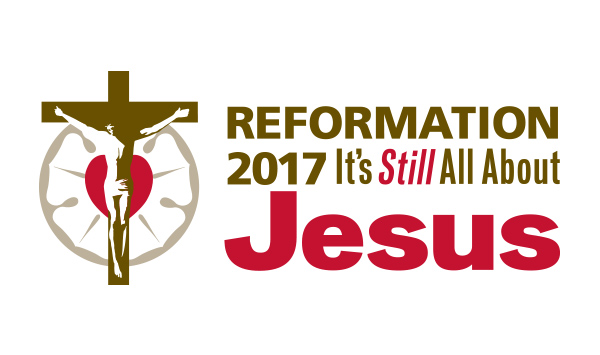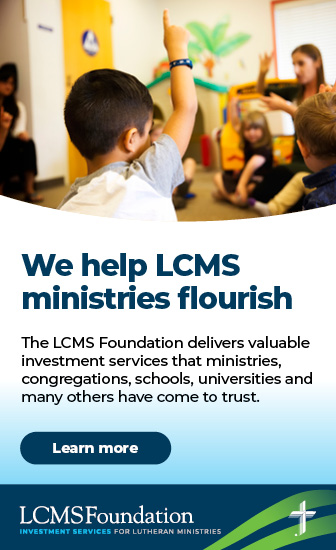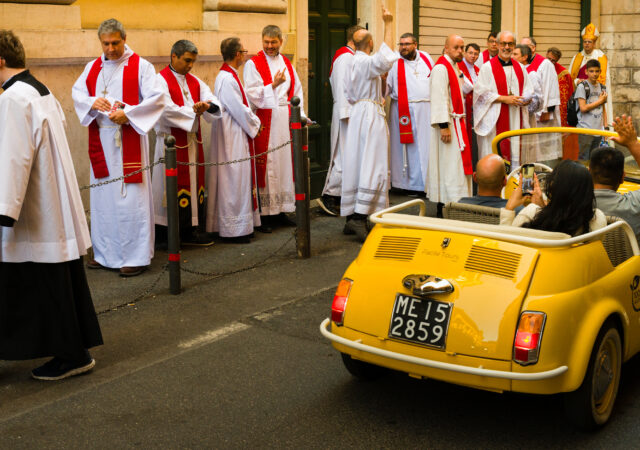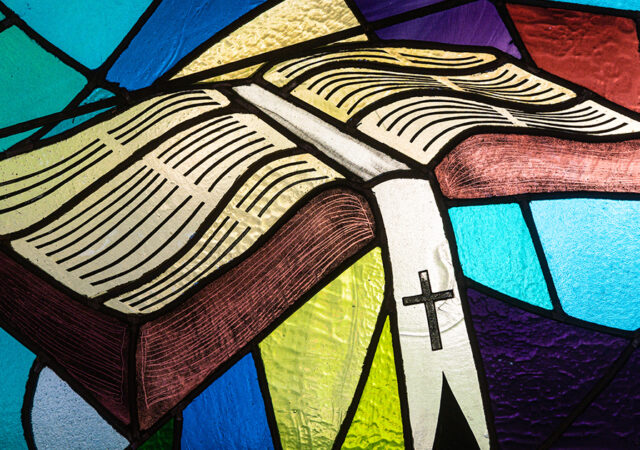The Rev. Randy Golter, special assistant to the president and director of the Synod’s Reformation celebration, talked with KFUO Radio’s Andy Bates on Oct. 14 about plans for the 2017 Reformation celebration and the Stand with Your Community Grant program.
Visit lcms.org/standgrants to learn more about this grant program – and lutheranreformation.org to learn more about the 2017 Reformation celebration.
Audio Player





The Lutheran Reformation webpage, “What is a Lutheran?,” states:
What are the Smalcald Articles and the Treatise on the Power and Primacy of the Pope?
“In 1537, Martin Luther was asked to prepare a statement of Lutheran belief for use at a church council, if it was called. Luther’s bold and vigorous confession of faith was later incorporated into the Book of Concord. It was presented to a group of Lutheran rulers meeting in the town of Smalcald.”
Huh? “In 1537…”?!?
How about August 20, 1536? According to Friedrich Bente’s Historical Introduction to the Lutheran Confessions:
“Luther had received the order to draw up these articles as early as August 20, 1536. September 3 [Chancellor to the Elector of Saxony, Dr. Gregory] Brueck wrote to the Elector on this matter: “I also delivered to Doctor Martin the credentials which Your Electoral Grace gave to me, and thereupon also spoke with him in accordance with the command of Your Electoral Grace.He promised to be obedient in every way. It also appears to me that he already has the work well in hand, to open his heart to Your Electoral Grace on religion, which is to be, as it were, his testament.” (p. 242)
“It was presented to a group of Lutheran rulers meeting in the town of Smalcald.
What?!? Not according to Bente:
“[I]t cannot be proved that he [Chancellor Brueck] directly and expressly mentioned them or submitted them for discussion and adoption.” (p. 244)
“According to this report [of the Strassburgers], then, Luther’s articles were neither discussed nor adopted at the official meeting of the princes and estates belonging to the Smalcald League.” (p. 246)
“As to the articles of Luther, Veit Dietrich reports that they were privately circulated at Smalcald and read by all. They were also to be read at the meeting of the theologians on February 18. (C. R. 3, 371.) As a matter of fact, however, neither a public reading nor a real discussion, nor an official adoption resulted.” (p. 247)
“Luther’s articles, however,were nevertheless adopted at Smalcald, though not by the South Germans. When all other business had been transacted, they were presented for voluntary subscription. Bugenhagen had called the theologians together for this purpose. He proposed that now all those who wished (qui velint) should sign the articles Luther had brought with him. Hereupon Bucer declared that he had no commission to do this.” (p. 247)
“Although, therefore, the subscription of the Smalcald Articles lacked the official character and was not by order of the Smalcald League as such, it nevertheless is in keeping with the actual facts when the Formula of Concord refers to Luther’s Articles as ‘subscribed at that time [1537] by the chief theologians’.” (p. 248)
The same misinformation regarding the Smalcald Articles is also on the Lutheran Reformation webpage entitled, “Frequently Asked Questions about the Book of Concord,” and on addition formats linked at the bottom of the webpage.
Coincidentally, on another Lutheran Reformation webpage, “The Texts of the Lutheran Confessions, there is a table that correctly notes that the Smalcald Articles were written in 1536, and gives this summary:
“Articles of faith intended by Luther to be an ecumenical platform for an upcoming ecumenical council. Stated what the Lutherans could not compromise and why.”
Preceding the table is a reference: Huth, Harry A. The Story Of Our Confessions. The Lutheran Witness Vol. 96 No. 2 (February 1977): pages 10, 11
It’s not clear if this reference is for just the table or the webpage’s text given about the reference or both. The entire webpage appears to be a copy of the text and table from the Book of Concord webpage, “A Brief Introduction to the Book of Concord.”
However, the text (from either webpage) has this about the Smalcald Articles:
“The Smalcald Articles were written by Luther in late 1536. On June 4, 1536, Pope Paul III announced that a council would be held in Mantua beginning May 8, 1537, to deal with the concerns of the Protestants. The elector (or prince) of Saxony requested Luther to prepare some articles for discussion at the council. Luther indicated on which points Lutherans would stand fast and on which points a compromise might be possible. These articles were never used for their intended purpose, but Lutherans at once recognized their value as a statement of pure evangelical doctrine, and they were therefore included in The Book of Concord.” [Emphasis added]
While it is true, as indicated, that the Elector did request articles where compromise was possible (“though, doubtless, they will be few in number”), what Luther provided in the Smalcald Articles was only those articles on which he would never compromise. Bente states (pp. 242-243):
“The Elector had spoken also of points in which a concession might be possible. In the discussion at Wittenberg, Spalatin mentioned as such the question whether the Evangelicals, in case the Pope would concede the cup to them, should cease preaching against the continuance of the one kind among the Papists; furthermore, what was to be done with respect to ordination and the adiaphora. Luther had not entered upon a discussion of these questions, chiefly, perhaps, because he was convinced that the council would condemn even the essential articles.”